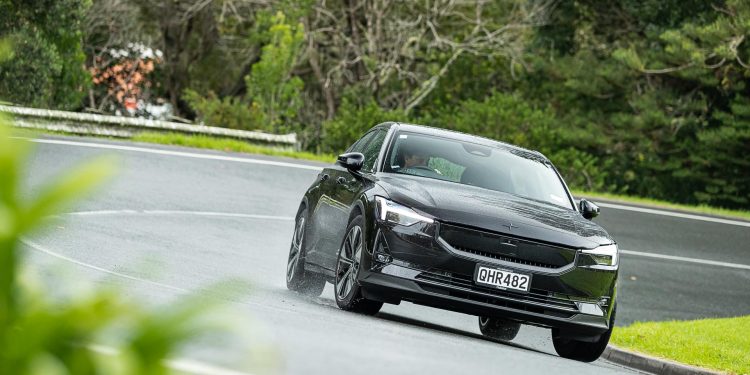2024 Polestar 2 Long Range Single Motor review
Words: Kyle Cassidy | Photos: Isaac Western
Polestar has done a real number on its 2, switching the drive from the front to the rear for its entry model. Has this big change justified the price hike?
Some model refreshes are more thorough than others. Usually a facelift involves a mild styling titivation, maybe a tweak to the powertrain and some extra kit that should have been included as standard from the start.
The update to the Polestar 2 you’d classify as thorough, one where the entry-level model has switched from pulling from the front to pushing from the rear.
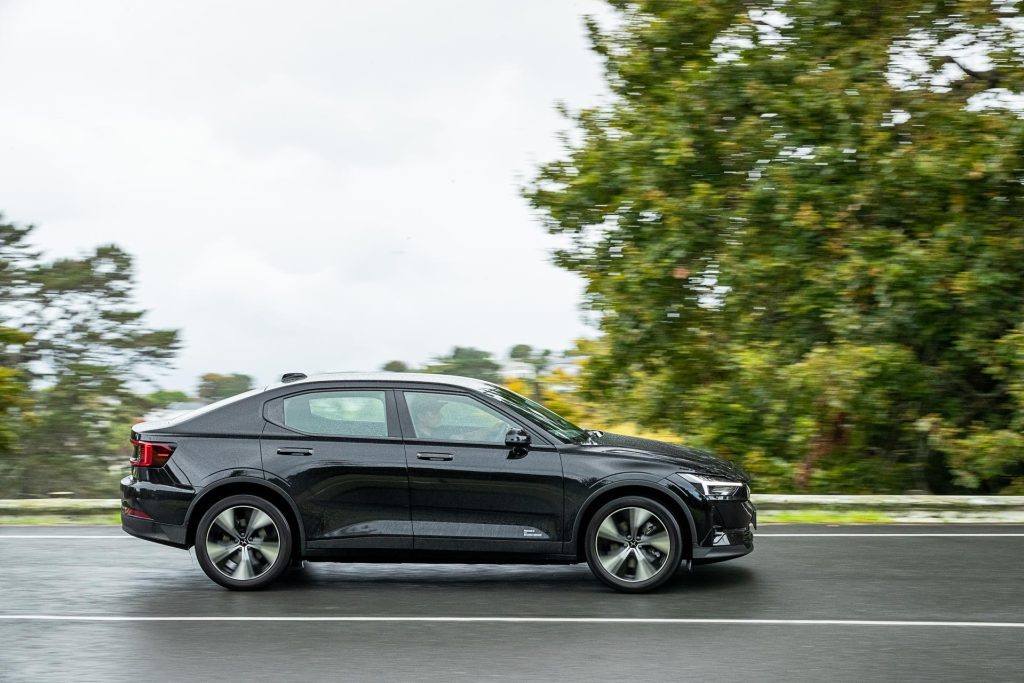
Given there was always an all-wheel drive option, the RWD transformation wasn’t a huge technical challenge, yet it has made a big difference. Front-wheel drive has its limitations, particularly when dealing with torque, something an EV has an abundance of.
It makes sense in a small ICE hatchback, where packaging is key. But for a BEV, it was strange that Polestar initially decided to go FWD.
However, it has righted that wrong and now the PS 2 better lives up to its ‘electric performance fastback’ billing.
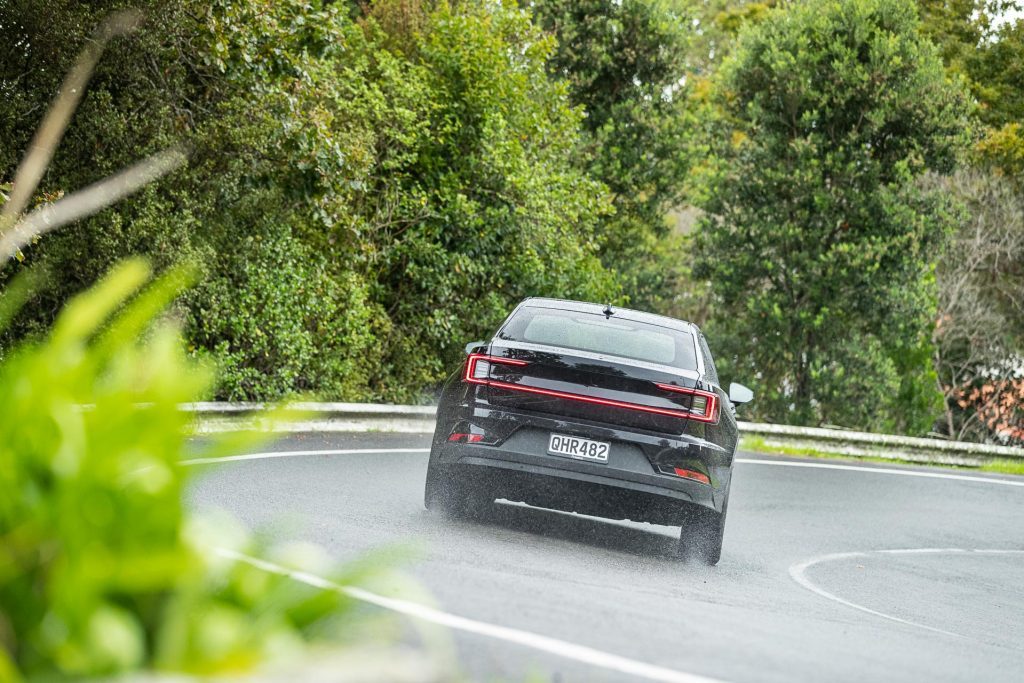
Other new bits include a subtle tweak of the styling, the new ‘high-tech front end’ replacing the Volvo-like faux grille treatment.
The motor at the rear is new with better inverters for additional performance and efficiency. Power is up from 170 to 220kW with 490Nm of torque.
Along with the motor’s traction-optimised placement, the 0-100km/h time falls to 6.2sec. Opt for the dual-motor version and you’ll get 310kW and 740Nm, or up to 350kW with the Polestar 2 Performance Pack.
All three models are only offered here with the long range 82kWh battery (79kWh net, NCM chemistry). It’s said that improved cell chemistry and other updates enable faster charging, the 400V architecture now capable of up to 205kW DC.
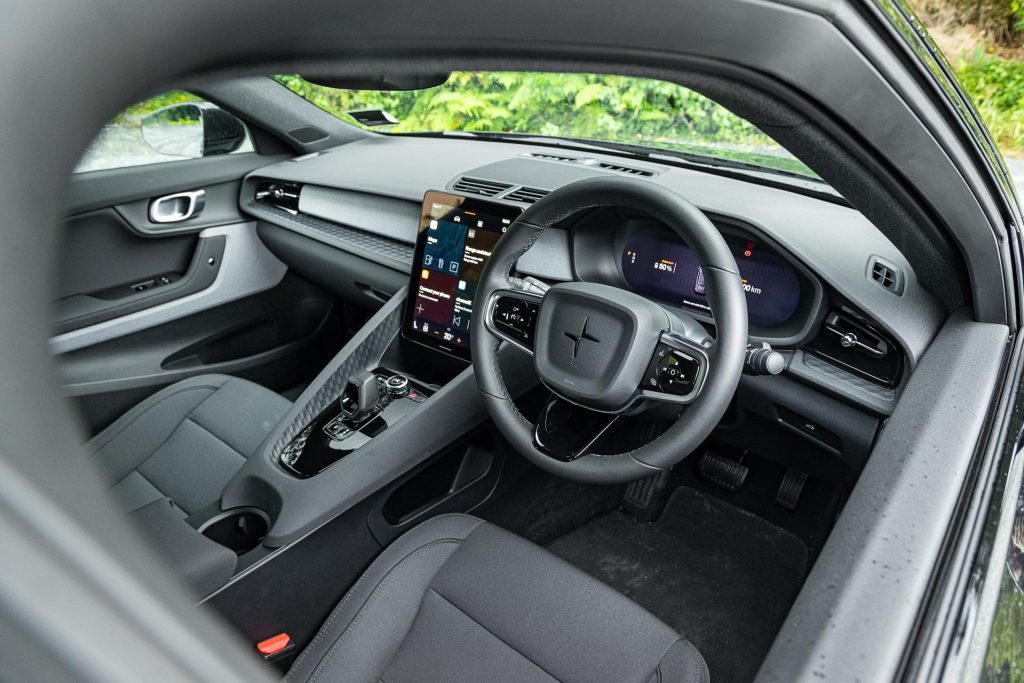
Efficiency improvements see the single-motor variant achieve up to 655km (WLTP). There is more standard kit too with extra safety features, a 360-degree camera and a wireless charger.
Remember when the PS 2 could be had for $70k? Well those days are gone, the improved model now starting at $89,990 while the dual motor is $110k and the Performance Pack is $120k.
One thing we liked about the old PS 2 was its ease of operation, and that’s still present.
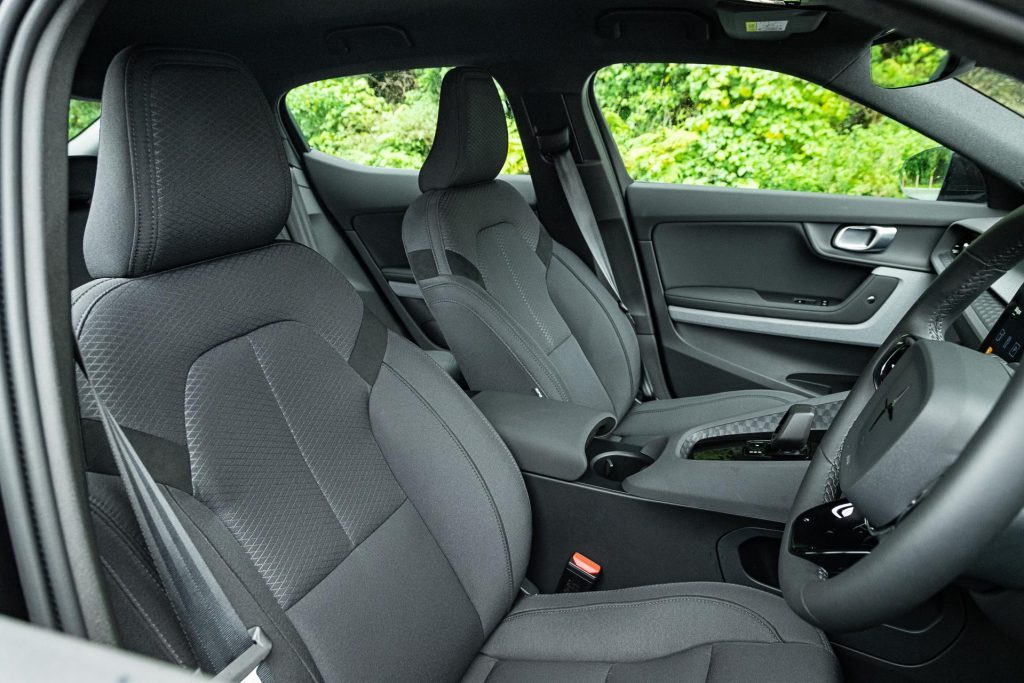
It’s ready to go once you’re on board, click the selector into gear and you’re off. Initially the driving position feels cramped, the high-rise centre console eats into the passenger space, hemming you in, where other EVs in this segment are more spacious.
We like the lack of leather; the textile-clad seats are warm and inviting. You get a powered seat squab yet the backrest is manually adjusted.
Most passengers feel the need to touch the surfacing of the dash, as it’s interesting, part of the PS 2’s stylish interior. It’s still bereft of buttons but the portrait-oriented touchscreen does everything well.
It’s quick, logically arranged and generally easy to use. It still has the Android Automotive OS with Google, probably the best in-car voice assistant around; it always understands what you’re on about and can handle more than just the basics.
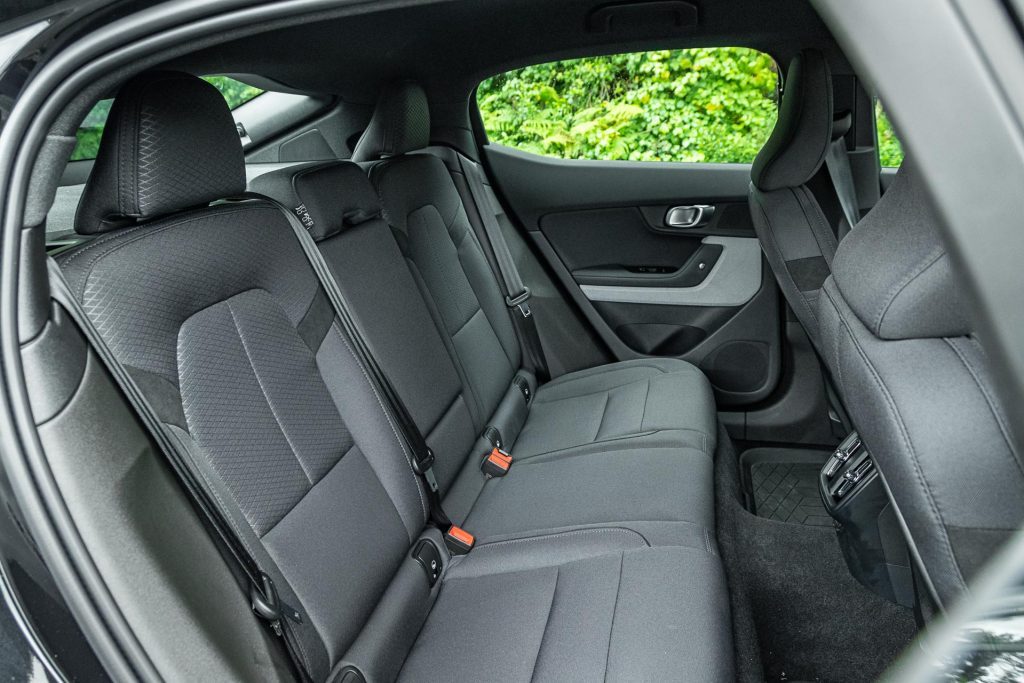
Being a ‘performance fastback’, it’s not as commodious in the rear as other options at this price point. It’s more of a 2 + 1 bench seat, the big hump in the middle robbing all the leg room for the third person.
And as for boot space, the hold is somewhat narrow but it’s practical with the usual split folding and some underfloor storage as well.
Polestar isn’t big on configurable set-ups for everyday driving; the drive mode is fixed, the suspension is set. And the things you can fiddle with, you tend to set once and forget.
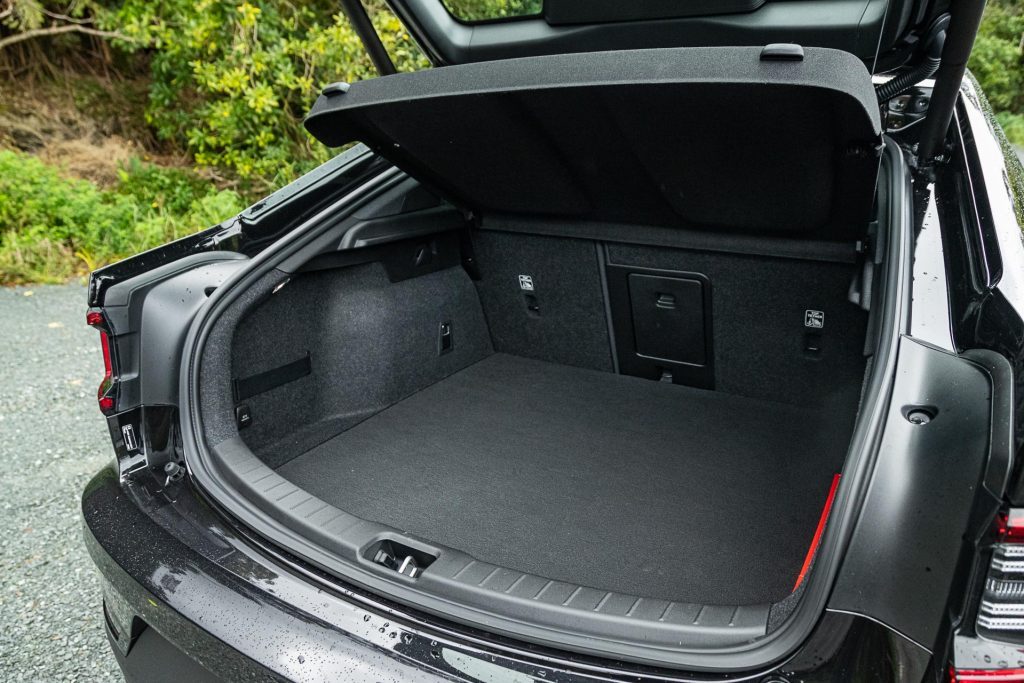
You can change the steering feel (we liked ‘light’ for easy urban manoeuvres) and you can change up the one-pedal drive.
You can have it off to maximise your coasting, ‘low’ which is neither here nor there, or have it in ‘Standard’; a bona fide one-pedal mode. This delivers smooth braking right down to a reasonably calm halt. You quickly get used to never needing the brake pedal.
There are many driver assistants beavering away, the lane keeping generally well behaved, and the adaptive cruise works smoothly, is easily set and it’s all done with a minimum of buttons on the wheel.
You can step this up to the Pilot Assist where it will help you drive along the motorway, although it’s a little nervous with constant small steering adjustments that has the wheel moving in your hands.
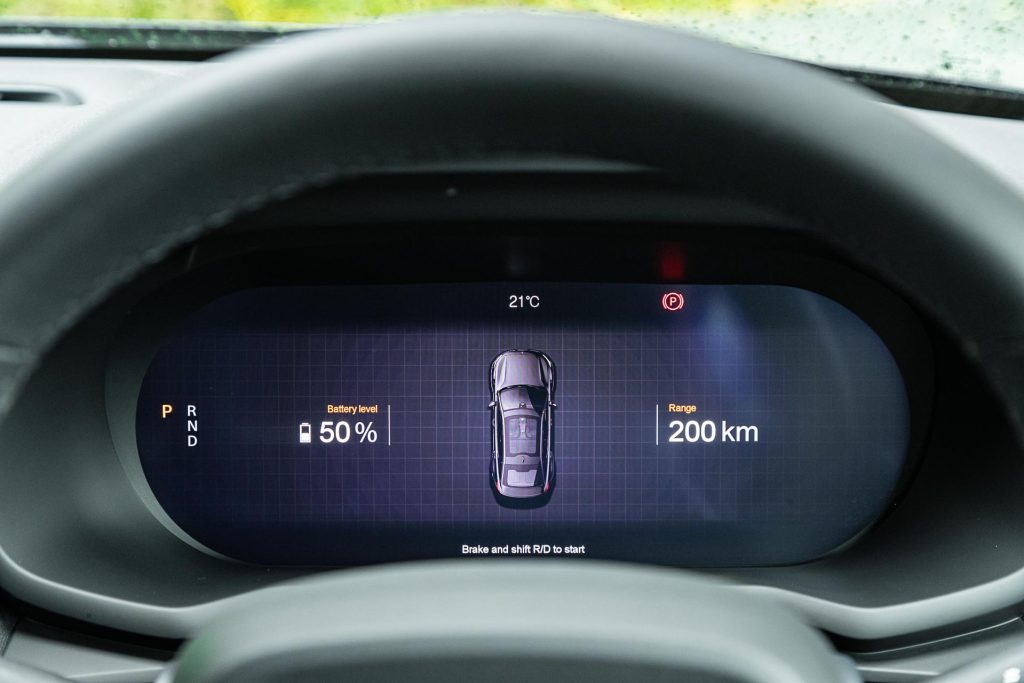
The big battery and reasonably efficient motor set-up (the long term average over 2000km sitting at 17.7kWh/100km) mean it’s not in constant need of a recharge.
The DTE was reading 460km on pick up at 90 per cent charged while an overnight juicing at home on the slow plug (14hrs) lifted the battery from 21 per cent (100km remaining) to 56 per cent and 250km.
You can schedule your charging via the touchscreen (no user app here) and you can set the charge limit, which Polestar recommends to be 90 per cent to ‘preserve the lifespan of the battery’.
The throttle programming is progressive; it doesn’t feel super zoomy through the first 40 per cent of the travel but give it the jandal and it feels 220kW quick.
This lends to a refined character, with the knowledge you have ample power in reserve. And it rolls on quickly yet smoothly when asked.
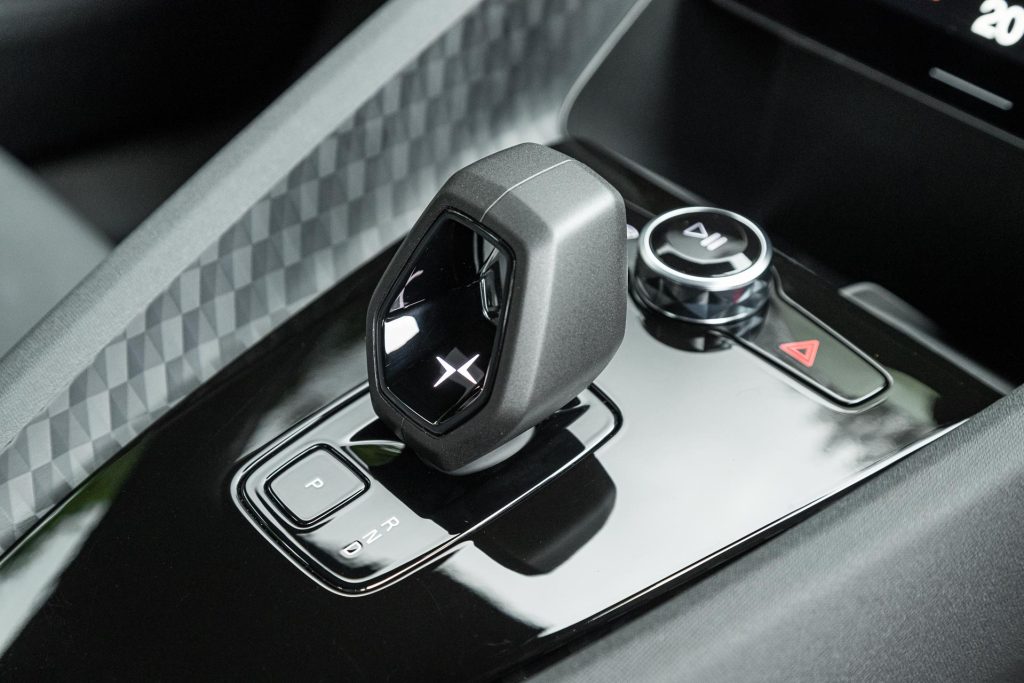
The steering is breezy – it’s fast too – however the turning circle is on the larger side at 11.5m, which is no better than the dual-motor version. The imaging for the 360 degree camera could be improved upon, though the view from the rearward monitor is okay.
While not super plush, the round town ride is fine, a few thumps from the rear end aside. It is a ‘performance fastback’ after all.
The PS 2 is not hindered by a lack of drive modes. Want to go faster? Press the throttle harder, and that passive suspension works competently. It has a well measured serving of control and compliance, riding most bumps out while keeping the roll in check.
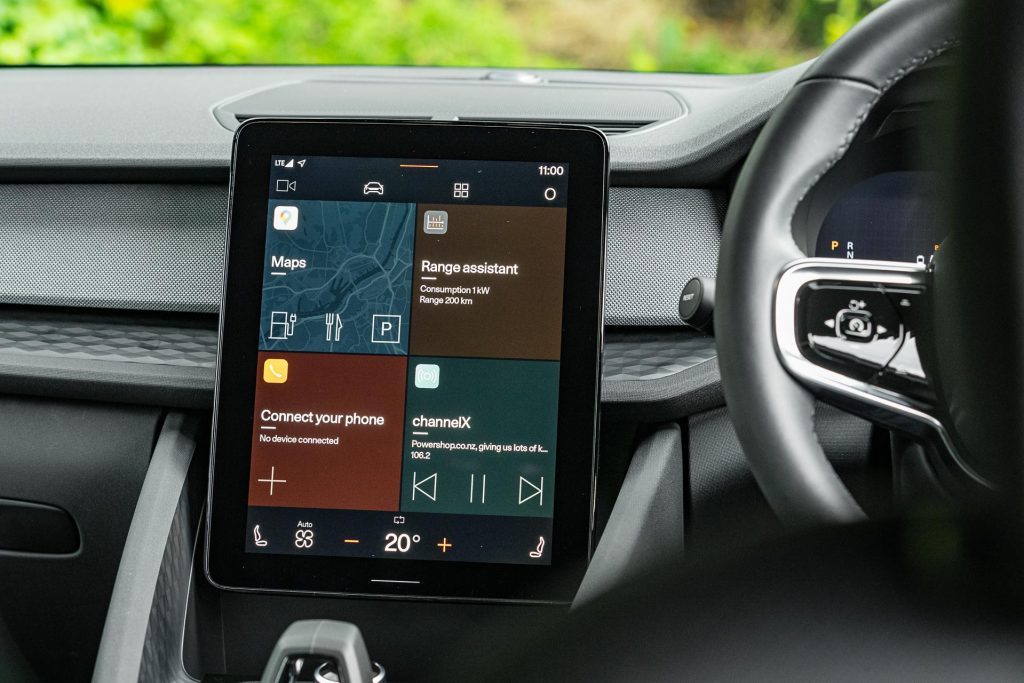
It feels balanced; removing the drive from the front wheels helps it turn more eagerly. It’s quite the athlete while there’s little in the way of understeer.
Adding some resistance to the steering does aid your cornering antics, while activating the ESC Sport mode gives the chassis more of a chance to express itself. This entry-level model now feels like a properly dynamic five-door.
The change to the drive system has fundamentally alterred the way this goes, for it’s now a genuinely sporty machine.
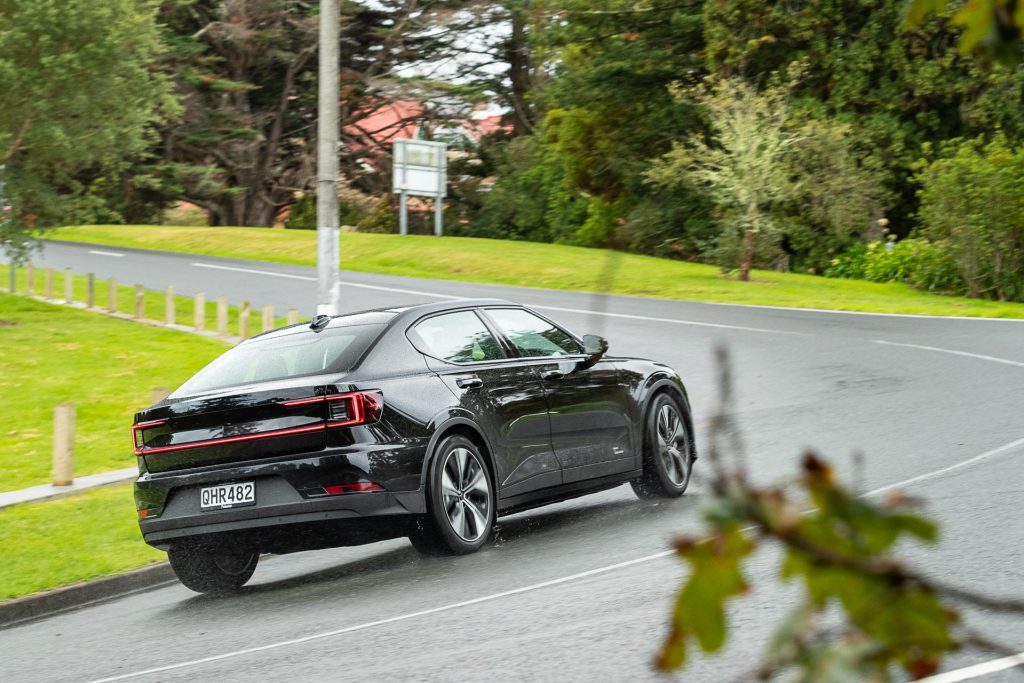
And its character you can appreciate without the need to attack the corners; it just feels sorted.
Added efficiency and accompanying increased range are pluses too, though they come at a price, with the cost of entry rising significantly.
| Model | Polestar 2 Long Range Single Motor |
| Price | $89,990 |
| Motor | 220kW, 490Nm |
| Battery | 82.0 kWh |
| Range | 655km |
| Drivetrain | single-speed auto, RWD |
| Energy Use | 14.8 – 17.2kWh/100km |
| C02 Output | 0g/km |
| 0-100km/h | 6.2sec |
| Tyre Size | f/r – 245/45R19 |
| Turning circle | 11.5m (2.2 turns) |
| Stability systems | ABS, ESP, TV |
| Safety | AEB, ACC, BSM, LDW, RCTA, ALK, AHB |
| Luggage capacity | 41-1097L |
| Tow rating | 1500kg braked |
| Service intervals | 2 years, 30,000km |
| Warranty | 3yrs, unlimited km |
| ANCAP rating | 5 Stars (2021) |
| Weight | 2084kg (claimed) |
This story first appeared in the May 2024 issue of NZ Autocar magazine.


